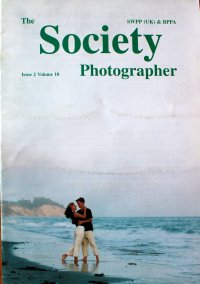articles/Weddings/colourmewild-page2
Colour me Wild! - part 2 of 1 2 3 4 5
by Winston Ingram Published 01/04/2000
Most chemistries work between 35°C and 38°C and whilst there is nothing wrong with this method it does take a lot longer to heat up and get underway. Whereas with RA4 mono the chemistry is used at 22°C (average room temperature) so the warm up time even in the winter is very quick. Each bath takes 45 seconds. Once your print has gone from the development bath to the bleach fix bath (there is no wash in between and you should avoid washing the print in between as it may upset the colour balance) it comes out straight into the water for a 2 minute wash and then the print is ready. Of course, if you are doing multiple prints then leave them all in the water and give them a 2 - 3 minute wash at the end, before you dry them. All this enables you to have your first colour print in 1half minutes.
My preferred paper is Kodak Supra 3 and I prefer gloss as I'm not a fan of grain on anything, I find that matt surfaces make my pictures look grainy which is something I'm trying to avoid. The other reason for using gloss paper is that it reproduces far better for a client scanning it either for magazine or advertisement use in advertisements.
Step 1 The temperature of the chemistry must be correct for both solutions. Not less than 22°C. If the temp is not correct or it fluctuates you will find the colour balance will change from print to print and you won't get any consistency.
Step 2 You must have a starting point. On the enlarger, there are dichronic filters; Yellow, Magenta and Cyan. I always start at 45 yellow, 45 magenta and 0 Cyan. As you can appreciate there are far less combinations to play with using two filters together, than there would be if you added a third. So it's better if possible never to use Cyan and always leave it on 0.
Step 3 You make a test strip for exposure. The two things you require to get right for a good colour print are the exposure and the colour balance, but until you've got the exposure right it should be logical that you can't expect the colour to be correct. e.g. if the overall colour was green, if the exposure was not enough then it would be too light, even if it was green; and if the exposure was too long then it would be too dark a green. Having once got the exposure correct you can then look at the test strip to see if the colour balance is o.k. I should mention at this point that I usually start with the enlarger lens on f/8. The reason for this is that nearly all lenses - camera or enlarger lenses, are designed to give the best definition when they are stopped down. If you leave the enlarger lens wide open, then you will find the edge or centre definition will suffer. If you can start with a maximum opening of 5.6 and preferably 8 or 11 then you are using the lens to get the best definition possible.
Please Note:
There is more than one page for this Article.
You are currently on page 2
- Colour me Wild! page 1
- Colour me Wild! page 2
- Colour me Wild! page 3
- Colour me Wild! page 4
- Colour me Wild! page 5
1st Published 01/04/2000
last update 09/12/2022 14:52:40
More Weddings Articles
There are 0 days to get ready for The Society of Photographers Convention and Trade Show at The Novotel London West, Hammersmith ...
which starts on Wednesday 15th January 2025





